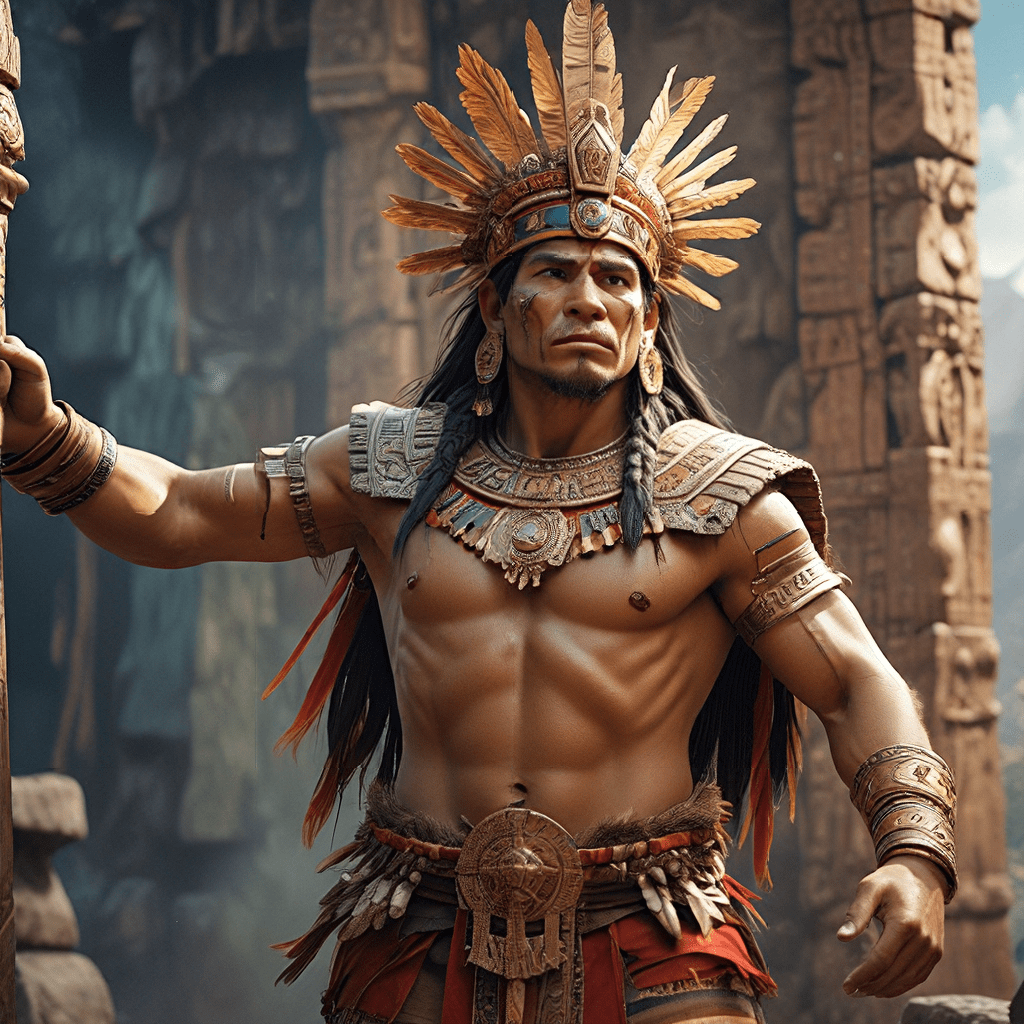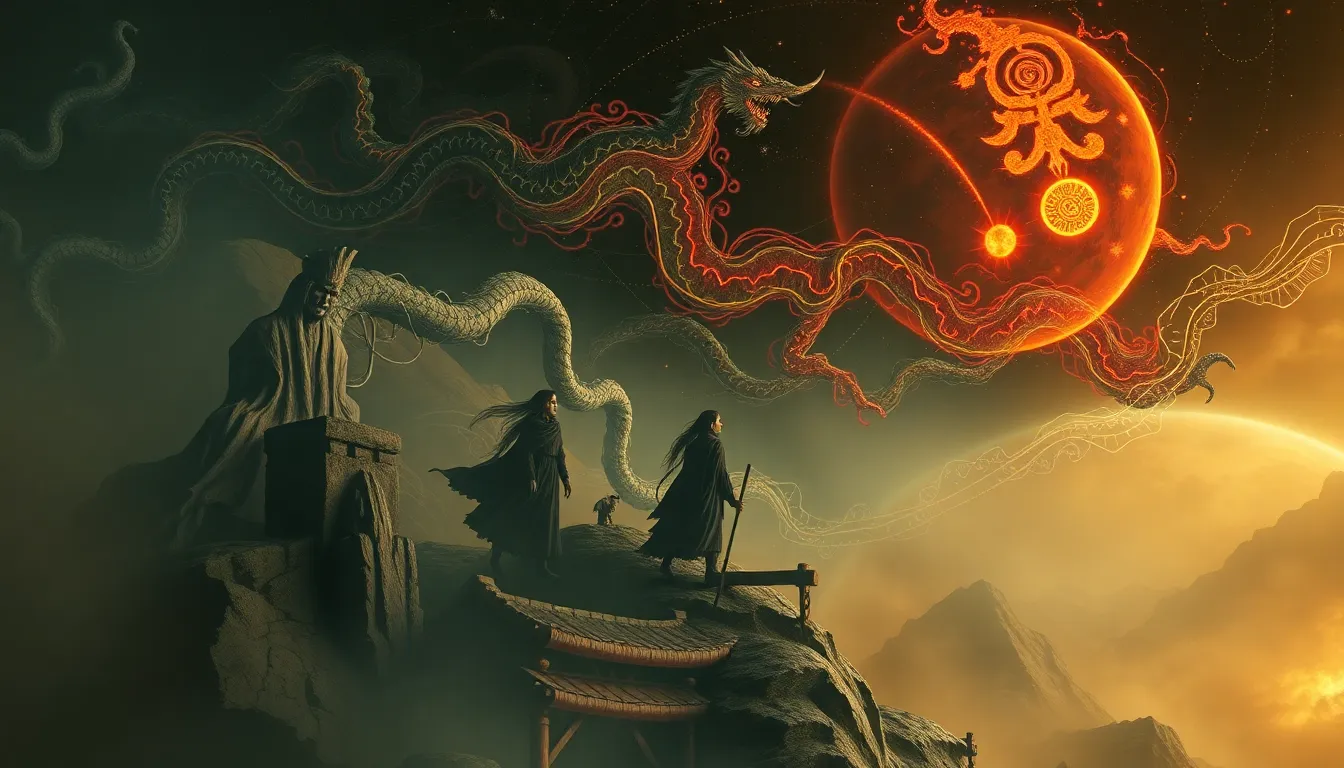The Feathered Serpent and the Mesoamerican Calendar: Quetzalcoatl’s Celestial Significance
I. Introduction
Quetzalcoatl, known as the Feathered Serpent, is one of the most revered deities in Mesoamerican mythology. This god embodies the duality of nature, combining the aspects of both the serpent and the bird, symbolizing the earth and the heavens. The importance of Quetzalcoatl transcends individual cultures, as he has been worshipped by various civilizations such as the Toltecs and Aztecs, each attributing unique qualities and narratives to him.
In addition to the rich tapestry of mythology surrounding Quetzalcoatl, the Mesoamerican calendar plays a crucial role in understanding the lifestyles and spiritual practices of these ancient cultures. The calendar was not merely a means of tracking time; it was deeply embedded in their agricultural cycles, religious observances, and cosmological beliefs. This article aims to explore the celestial significance of Quetzalcoatl, emphasizing his relationship with the Mesoamerican calendar and his role in the cosmos.
II. Historical Context of Quetzalcoatl
The origins of Quetzalcoatl can be traced back to the early Mesoamerican civilizations, where he emerged as a prominent figure in their mythological canon. Initially associated with the wind and learning, Quetzalcoatl’s identity evolved over time, incorporating various attributes and stories.
Across different cultures, Quetzalcoatl held significant cultural importance:
- Toltecs: Viewed him as a god of civilization, associated with the establishment of laws and culture.
- Aztecs: Revered him as a god of wind, learning, and the morning star, linking him to agricultural fertility.
- Other cultures: Various interpretations of Quetzalcoatl can be found in the Mixtec and Zapotec civilizations, demonstrating his widespread influence.
Quetzalcoatl is often depicted with specific symbols that reinforce his multifaceted nature, such as the feathered serpent, which embodies both the terrestrial and celestial realms.
III. Understanding the Mesoamerican Calendar
Mesoamerican cultures utilized sophisticated calendar systems that were integral to their agricultural and religious practices. The two primary calendars were the Tzolk’in and the Haab’.
- Tzolk’in: A 260-day ritual calendar that consisted of 20 periods of 13 days. It was used for divination and ceremonies, linking daily life with the gods.
- Haab’: A 365-day solar calendar that included 18 months of 20 days each, plus an additional month of 5 days. This calendar was primarily used for agricultural purposes.
The interplay between these calendars allowed Mesoamerican cultures to synchronize their agricultural cycles, religious festivals, and social activities, reinforcing the significance of time in their worldview.
IV. Quetzalcoatl and the Calendar: Key Connections
Quetzalcoatl’s connection to the Mesoamerican calendar is particularly evident in the Tzolk’in cycle. He is associated with specific days within this calendar, which are considered auspicious for various rituals and activities.
Key connections include:
- Role in the Tzolk’in: Quetzalcoatl is linked to particular days, such as 1 Reed (Tochtli), which are significant for both divination and agricultural rites.
- Festivals and rituals: Numerous festivals were dedicated to Quetzalcoatl, including the Mexica celebration of the renewal of life, which coincided with agricultural planting seasons.
- Astronomical alignments: Alignments of celestial bodies, particularly Venus, were closely monitored, and Quetzalcoatl’s appearances were celebrated in relation to these events.
V. Celestial Associations of Quetzalcoatl
Quetzalcoatl’s celestial significance is further emphasized by his association with Venus, which is known as the morning star. This connection highlights his role as a harbinger of light and new beginnings.
Additionally, the Feathered Serpent is linked to solar phenomena:
- Representation of Venus: Quetzalcoatl’s appearances in the sky were celebrated as vital to agricultural cycles, symbolizing fertility and rebirth.
- Solar phenomena: His narratives often involve the sun’s journey across the sky, representing the cyclical nature of life.
- Mythological narratives: Various myths recount Quetzalcoatl’s adventures in the cosmos, underscoring his significance in the celestial hierarchy.
VI. Quetzalcoatl’s Influence on Mesoamerican Cosmology
Quetzalcoatl’s integration into the broader Mesoamerican cosmology reflects a profound understanding of duality—earth and sky, life and death. His symbolism encapsulates the interconnectedness of all existence.
Key aspects include:
- Representation of duality: Quetzalcoatl embodies the relationship between the terrestrial and celestial, illustrating how these realms influence each other.
- Impact on later cultures: The myth of Quetzalcoatl influenced subsequent civilizations, shaping their beliefs and practices, particularly in relation to creation and destruction.
VII. Modern Interpretations and Cultural Legacy
Quetzalcoatl continues to inspire contemporary culture and spirituality. His legacy is evident in various forms of art, literature, and spiritual practices that seek to reconnect with Mesoamerican heritage.
Furthermore, the significance of the Mesoamerican calendar persists in modern times:
- Contemporary culture: Quetzalcoatl is revered in various spiritual movements and artistic expressions that honor indigenous traditions.
- Ongoing significance of the calendar: Scholars and practitioners continue to study the Mesoamerican calendar, recognizing its importance in understanding the agricultural and spiritual rhythms of life.
- Preservation efforts: Various academic studies and preservation projects aim to keep the myths and cultural practices surrounding Quetzalcoatl alive.
VIII. Conclusion
In summary, Quetzalcoatl’s celestial significance is deeply intertwined with the Mesoamerican calendar and the cosmological beliefs of ancient cultures. His representation of duality, as well as his associations with celestial bodies, highlights the profound understanding that Mesoamerican peoples had of the universe.
The enduring legacy of Quetzalcoatl and Mesoamerican mythology invites modern society to appreciate and study the beliefs and practices of ancient cultures. By doing so, we can gain deeper insights into the human experience and the interconnectedness of all life.



